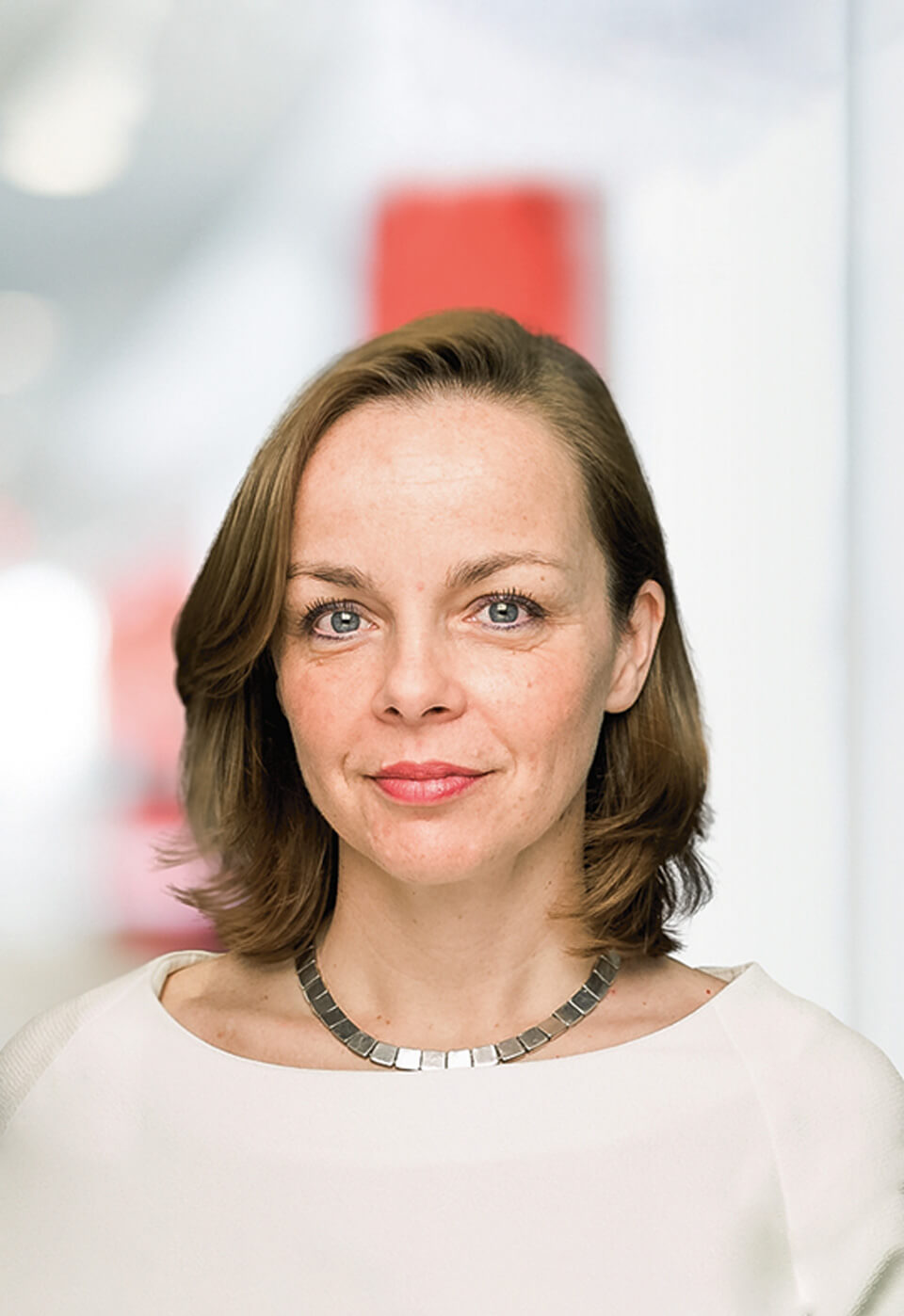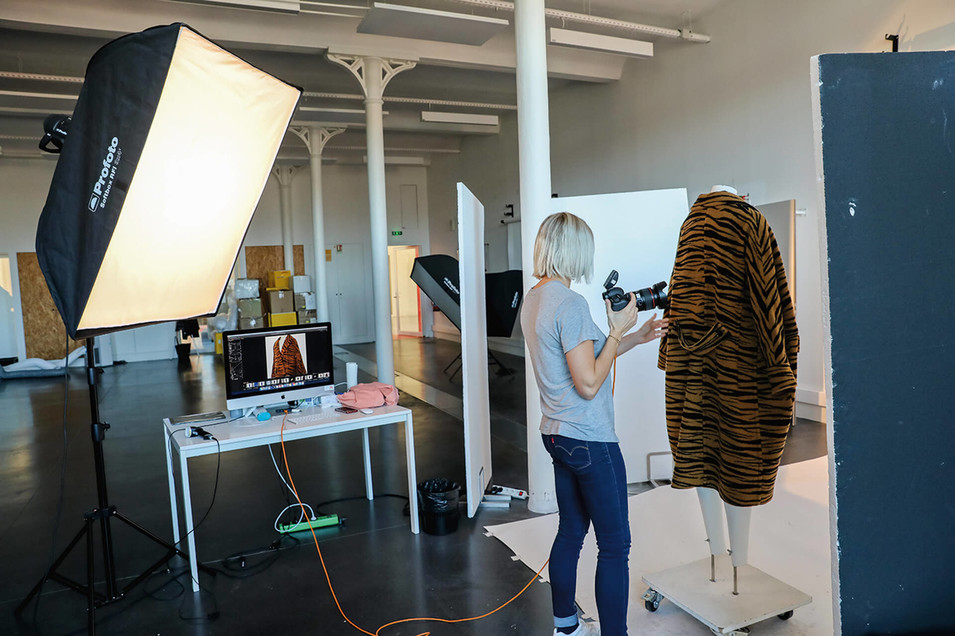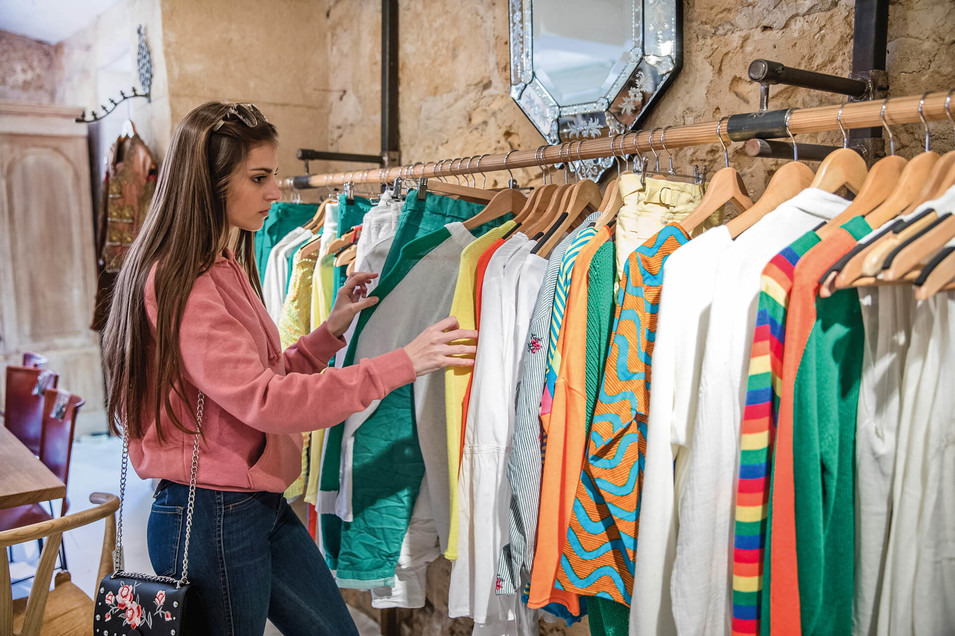
Buying second-hand can be pure luxury

JOËLLE DE MONTGOLFIER
Vice-President of Global Consumer Products, Retail and Luxury Practices at Bain & Company.
Bain & Company is an international strategy and management consulting firm. Its head office is located in Boston, United States.

OSANNA ORLOWSKI
Chief Operating Officer and co-founder of Collector Square.
Collector Square specializes in the online sale of second-hand luxury watches, bags and jewellery.
What are the reasons for the current craze for second-hand luxury?
Joëlle de Montgolfier: This is an established trend which has been growing for many years and which corresponds to the expectations of mainly younger consumers. The very strong growth of
this market can be explained by simple economic reasons—the second-hand market makes luxury accessible to new generations—and also by concerns surrounding responsible consumption. Customers no longer feel pressured to own things or buy them new. They realize that their consumer patterns have an impact on the environment and wish to act to help preserve the planet.
Osanna Orlowski: For a long time, our customers have been guided by the price—with a discount
of 30 to 50% compared to the price new—or by the search for limited collections, or rare or new products that are difficult to obtain. Today, we are also seeing the development of shopping centred around the very idea of second-hand, as a responsible approach inspired by the circular economy. This concerns mainly young people, who are somewhat more sensitised to this concept.
However, the majority of our customers come from a more mature demographic because our average unit purchase price (over 3,500 €) remains relatively high.

The second-hand market has evolved over time. Originally associated with physical outlets, it focused mainly on jewellery and watches,
but with the Internet explosion, shopping is increasingly migrating online as customers seek out new types of pre-loved products, including clothes, shoes and accessories.
How did the market weather 2020 and the pandemic crisis?
J.d.M.: The second-hand market was historically distributed across physical networks and very focused on watch making and jewellery.
With the closing of stores and auction houses, the second-hand market has moved to the Internet as well as broadening to include fashion and accessories. Consumers have had time to sort through their closets, put their clothes for sale and at the same time continue shopping across a range of online platforms.
O.O.: Collector Square has recorded an average annual growth of between 20 and 30%. In 2020, we grew by nearly 25% thanks to a very strong increase in digital, despite the closure, for several weeks, of our showroom, which usually represents between 20 and 30% of our activity. Our pieces combine an investment dimension and a dimension of pleasure, which means that our attractiveness has not weakened, rather it has increased.
What are the medium term prospects?
J.d.M.: Everything suggests that the trend should continue or even accelerate. The rate of growth in recent years—in the low end of a double-digit range—should continue. In a conservative scenario, the market should maintain its current momentum but it could do more. It has notably strong growth margins in certain segments that are still poorly represented, such as children’s fashion or shoes. This includes sneakers, which can become real collector’s items when models are created in collaboration with celebrities.
O.O.: We are certainly confident. The past 18 months have been an accelerator of trends, particularly in terms of the digitization of sales and with pieces that combine as both investment and items of pleasure for the purchaser.
Are Chinese customers, so fond of luxury, starting to enter this market?
O.O.: The very principle of vintage is quite foreign to Chinese customers, as to those from the Middle East or Latin America. These customers are more interested by more recent or brand new pieces, sometimes never previously worn or very difficult to find. But mentalities are changing and certain categories of customers, often the youngest and the certain regulars, are turning more to vintage or rarer pieces, in order to stand out.
J.d.M.: The market remains mainly European (55% in 2019) and North American (United States, 27%). In China—the locomotive of global luxury—the attraction of new, high-status products remains very strong because the luxury object remains a tool in the demonstration of a certain social status. Suspicion surrounding possible counterfeit items sold on the platforms also constitutes a powerful brake on the development of this market in China. There is a second-hand market in Asia but it remains fairly local, especially for jade jewellery, offered in Hong Kong auction houses.

The second-hand market makes luxury accessible to new generations. There are also concerns surrounding responsible consumption.
How are brands positioned?
J.d.M.: As with other thorny subjects, they tend to look the other way, as it were. It is true that this can make them a little schizophrenic because their job is to manufacture and sell new products. But ultimately, as they begin to increasingly integrate themes around sustainable development, brands will be able to respond positively to a real customer demand, welcoming younger generations and supporting them in their move upmarket. Even though the model is complex, they should analyse the reality of the situation on the ground and consider developing it themselves. In leather goods in particular, the second-hand market can be interesting because with the decrease in meat consumption, the supply of quality skins may ultimately become difficult to sustain.
O.O.: It is still a fairly sensitive subject, which divides opinion. But it’s a reality that is not going away any time soon, and which brands are also now beginning to accept, and they are working out how to position themselves to profit from it. They are sceptical about platforms who go around them, but are reassured by models like ours which exercise greater control over product supply, and who assess and authenticate the brands in a serious way.
Some are getting started...
O.O.: Yes. Cartier sells some vintage watches. These are in very small volumes but the idea is perhaps gaining ground. I think it’s a conscious choice on their side. That said, being an intermediary and being a creator of products are really two different trades. This would require a completely separate internal brand organization.
J.d.M.: In more accessible luxury segments some, like Weston, have started to invest in the second-hand market because they consider that it is an interesting ground to exploit in terms of communication, product life-span and responsible consumer positioning.
Department stores such as Le Bon Marché and Selfridges are also getting involved.
O.O.: Yes. Collector Square was the first second-hand player to open a permanent space in a department store, with space on the ground floor of Le Bon Marché. As a proof of changing attitudes: we sell second-hand Rolex watches just a few metres away from the Rolex space. We obviously work intelligently, focusing on models that are no longer in the retail store. It’s a big change and I’m sure brands will reposition themselves little by little, perhaps in the form of a partnership. Or even just do it themselves.
The appearance of many startups certainly testifies to the appetite of investors for this business sector.
J.d.M.: In luxury goods, for obvious reasons linked to price levels, the second-hand market has created opportunities that have been clearly identified by disruptive digital players. They responded to a need that was not met by brands, and resale platforms such as The RealReal or Vestiaire Collective have multiplied as a consequence. New unicorns have emerged like StockX, a specialist in sneakers that are now worth more than a billion dollars, or Poshmark, floated on the stock market in 2021 and already valued at more than $2 billion.

Collector Square was the first seller of luxury second-hand items to have a permanent presence in a department store.
Are we heading towards a time of consolidation?
O.O.: Collector Square has been approached by funds or foreign companies who operate close to our business model. We did not however follow up on them because we have no plan to open up our capital. We could make our own acquisitions, of course. But nothing is under consideration at the moment.
J.d.M.: The number of actors is multiplying. Yes, eventually a market consolidation will occur because not everyone will have an appropriate supply chain or the service standards that are expected by buyers. And the business equation will not yield a positive result for everyone. Are luxury groups going to join in? I think they will leave the startups to develop, and then when they reach a certain critical size, there may be takeovers, aimed more at internalizing the skills and infrastructure required than at acquiring a specific portfolio of clients.


Brands are cautious about the second-hand market, because they are primarily in the business of making and selling new products. But they know that this sector cannot be ignored and will allow them to reach young customers more easily and then, over time, retain them as they move upmarket.
Do new rental or subscription based models have a future?
O.O.: These are not models that we are considering adopting. We have a service that is not so far from this concept already as a customer can resell a piece in the year following their purchase under preferential terms. This helps bring a certain fluidity and liquidity to the market. Customers want to own watches, jewellery or bags—unlike with an evening dress, for example, which is often linked to a one-off event—but they also want to be able to change them easily. At Collector Square, 30% of customers are both buyers and sellers.
J.d.M.: The subscription model has not really taken off, despite the interest expressed in it. Renting certainly works better. It is the same logic by satisfying a simple need for use rather than for ownership. The first luxury unicorns such as Rent the Runway have thus positioned themselves squarely within this segment. But rental remains very focused on clothing for certain occasions, such as weddings or formal evenings. It still satisfies an exceptional need, rather than a daily one. The issue for this sector would be to extend it to everyday fashion but this has not yet been seen to any great degree.
What impact can new technologies have?
J.d.M.: Technology like the blockchain could accelerate the growth of business activity in the second-hand market insofar as it facilitates certification, traceability and authentication, which are key elements for sustaining consumer confidence.
O.O.: The blockchain has a very great interest for brands since it allows for the creation of a kind of tamper-proof digital passport for products.
Interview by Pascale Denis.




